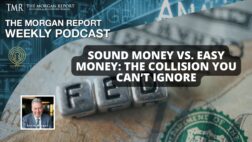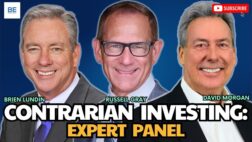The Wallace Street Journal
By David Bond, Editor
Silverminers.com
To Know Us Is To Love Us
Wallace, Idaho – To know the hard-rock mining business is to love it. But you’ve got to learn it to know it. This business is so full of charlatans, characters, fortunes made and lost, splendid, big-hearted souls, death, murder and mayhem, and governmental and pressure group interests as to confuse an Einstein intelligence.
This rant comes up because of a chance meeting with Hecla Mining Co. CEO Phil Baker here in Wallace a few days ago. We had just sent Mr. Baker a copy of Paul Sarnoff’s “Silver Bulls – The Great Silver Boom and Bust,” following up a conversation we’d had with him in January at The Cambridge House conference in Vancouver about Gregg Olsen’s superlative work, “The Deep Dark” about the Sunshine Mine Disaster of 1972, (Any time you catch a mining CEO with curiosity, with which Baker brims, and one who sends books that move him to his department heads and requires them to read it, well, you indulge that curiosity.)
But back to “Silver Bulls,” there’s a back-story here: the late and elegant Phil Lindstrom, whose former home here in Wallace we now inhabit and share with a mortgage company, introduced us to the late Paul Sarnoff back in the 1970s, who was holding court in the bar at the Davenport Hotel during a Northwest Mining Convention. Mr. Lindstrom was at that time a very Important Person with Hecla, whose job duties we never fully understood but who could wax so eloquently on the subject of silver and mining that it did not matter.
At any rate, in the course of our conversation with Mr. Baker at Albi’s here in Wallace, the subject of other books about mining came up. And it got us to thinking: somebody (God forbid it might be us) should do a thorough bibliography on this strange business of breaking sulfide rocks out of the sides of mountains and from beneath them, then converting these rocks into money, and present it in an entertaining order. After all, the business is as old as King Solomon, and at least as fascinating.
Author John Fahey was our introduction to this world. A book of his, “The Days of the Hercules” – that’s a play on words – carried us through our first snowy winter in Wallace, Idaho. To think of the desperation and the hope that drove men and women (not always together) from the warmths of Milwaukee, Chicago and San Francisco to the snow- fire- and flood-infested north of Idaho, well, it beggars the imagination, albeit Fahey paints a splendid picture.
Following Fahey, we next picked up Sarnoff’s “Silver Bulls,” which puts you in the front-row seat of the roller-coaster that was the late 1970s and early 1980s silver market and America’s most recent taste of runaway inflation, there with the Hunts, the Saudis, Jimmy Carter’s Cabinet and the Commodities Futures Trading Commission in leading roles. Paul was there for all of it, trading for Conti-Commodity and then for Paine-Weber. He knew all the players. In his lifetime Paul Sarnoff wrote something like 33 books. But “Silver Bulls” is the important one. He said so, too.
We took a little break from books to cover some real-time mining and labour activities, including a 9-month strike at the Sunshine Mine and the collapse of Bunker Hill’s supplies of mine concentrates from South America. Then Mount St. Helens blew up and buried us in grey crud for a summer. It was a great year for newspapering but a lousy year for mining, as Paul Volcker and Ronald Reagan buried metal prices and broke Jimmy Carter’s inflation over the mining man’s back.
The sun eventually pierced through St. Helens’ greasy air, and someone turned us on to Steve Voynick’s “The Making of a Hardrock miner: An Account of the Experiences of a Worker in Copper, Molybdenum, and Uranium Mines in the West.” Despite our fairly frequent visits to the bowels of the Sunshine Mine’s lower levels off 10 Shaft, we had no real idea of what it’s like to toil in the stopes a mile underground every day. Voynick tells this story, and he tells it elegantly.
(Voynick wrote a beautiful piece in some Colorado newspaper 20 years back, during the farming credit crisis, when everyone was holding a Farm Aid or some other crusade about the poor farmers. Its title said it all: Who Weeps for the Miners?)
Fahey re-entered the scene a decade or so ago with “Hecla: A Century Of Western Mining.” And back there we were again, in those steep, icy, muddied, snowy, fire-prone hills of northern Idaho, with the men and women who out of desperation or hope populated our hostile woods and crude cities. There’s a novel suggested in every page. One of these days . . .
But by a decade ago, mining had disappeared from the American radar screen. If it ever even mattered to the American psyche – and trust this: miners were the first to settle the western part of this continent, only afterwards did farmers and loggers follow, to tend to the miners necessities – the business of mining became the object of derision, hatred and control by environmental pressure groups. The United Snakes government, always eager for an opening, followed suit.
A few nay-sayers called the Greenies’ bluff, most notably Danish environmentalist Bjorn Lomborg in his seminal 1998 “The Skeptical Environmentalist.” In it, Lomborg questions our sense of priorities, that for a few micrograms within a sampling error we should perhaps not tear down entire industries.
Then in 2002, Peter Samuel, a most unlikely author, published the definitive work on the lead-poisoning hoax that has been perpetrated by the U.S. Environmental Protection Agency, entitled “Lead Astray. Samuel describes EPA’s evolution from a guardian of clean water and air into a gigantic earth-moving enterprise by scaring people to death, with the United Snakes EPA as the general contractor, skimming 10 points off the top.
We come now to “North Idaho’s Superfund: Facts and Fraud” by Fred Traxler and Robert Hopper. Traxler is a chemist and Hopper is a hard-rock miner, who owns the Bunker Hill mine. They take Samuel’s work a step further, first by confirming (with the government’s own numbers) the government’s deliberate fraud of confusing the local hicks with the very real dangers of lead-oxide paint and putty in their older homes with the innocuous effects of mineralized mining camps in the hard-rock West. (After all, if you’re looking to mine lead, wouldn’t you go to where the Planet put the lead? And why would lead concentrations in northern Idaho’s Cataldo Mission, built several decades before mining even commenced in this district, be so far above EPA’s required minimums?)
What is so darkly disturbing about Traxler’s and Hopper’s heavily-footnoted tome, “North Idaho’s Superfund,” is how far we’ve come. That a regional extension of a federal agency can systematically reduce a once-proud and self-sustaining community into a cattle-yard of dependent cowards. From joy leaps defeat. Read the books. Hopper’s and Traxler’s books are at The Silver Summit’s office, 604 Bank Street, Wallace, Idaho USA 83873 (tel. 208.556.1621). The others may be found on Amazon.



